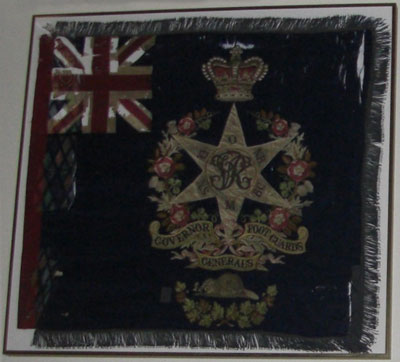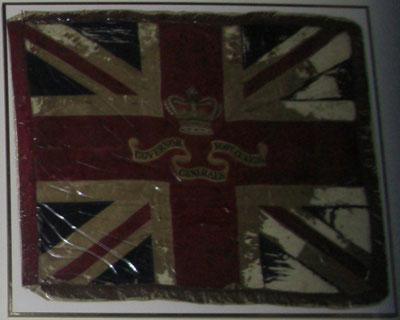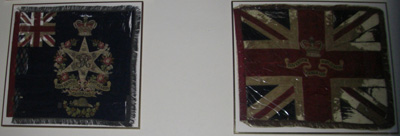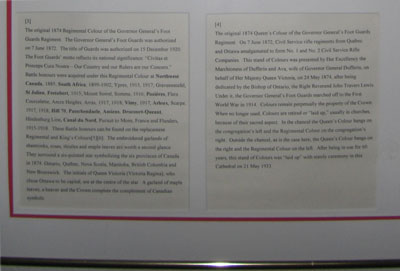This memorial, erected by members of the Regiment, was unveiled on 21 May 1933 and dedicated to the Governor General's Foot Guards.
The Governor General’s Foot Guards was formed on June 7, 1872 in Ottawa. The Regiment has been headquartered at the Cartier Square Drill Hall since 1879. Members of the Regiment took part in the Nile Expedition of 1884 and the following year provided a company of sharpshooters to the Battleford column during the Northwest Resistance, where the Regiment suffered its first two casualties at the battle of Cut Knife Hill. During the South African War the Regiment contributed volunteers for the various Canadian contingents, mainly the 2nd (Special Service) Battalion, Royal Canadian Regiment of Infantry.
The Governor General’s Foot Guards perpetuates two battalions of the Canadian Expeditionary Force who took part in the First World War. The 2nd (Eastern Ontario) battalion “The Iron Second”, which was a part of the 1st Canadian Division and saw continuous service on the Western front from 1915 to end of war in 1918. The 2nd Battalion also fought at the battles of Ypres, St. Julien, Festubert, Pozières, Vimy (1917), Arleux, Hill 70, Passchendaele, Amiens, and Canal du Nord, to name only a few. By the end of the war, 242 officers and 5,084 other ranks had fought with the battalion. Of those, 52 officers and 1,227 other ranks were killed. The 77th (Ottawa) battalion provided reinforcements for the Canadian Corps until 22 September 1916, when its personnel were absorbed by the 47th Battalion (British Columbia), Canadian Expeditionary Force and the 73rd Battalion (Royal Highlanders of Canada) and the battalion was disbanded. The honours and traditions of these battalions are perpetuated by the Governor General’s Foot Guards.



